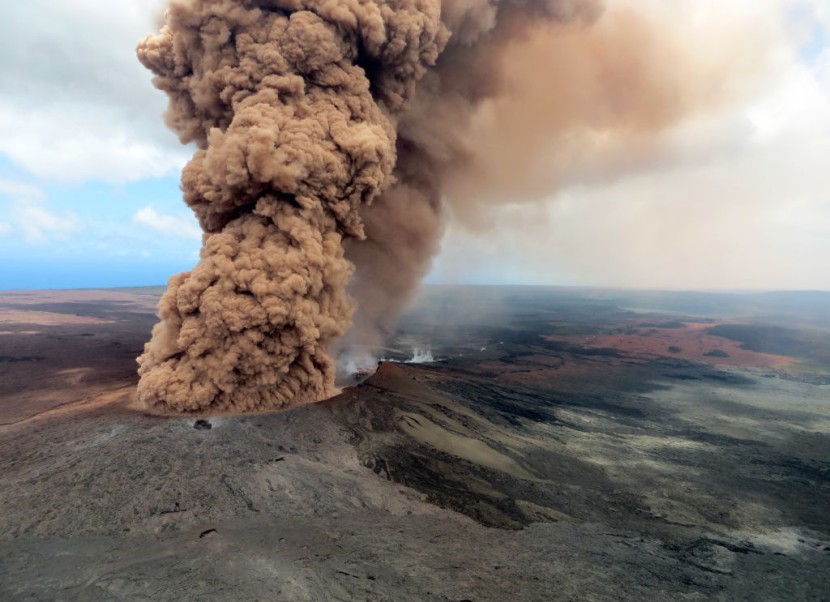
On Sunday evening, Hawaii's Kilauea volcano started erupting for the third time this year in a spectacular exhibition of the strength and activity of nature.
Rapid summit uplift and a period of high seismic activity preceded the eruption, which prepared the ground for a dynamic volcanic outburst.
Kilauea Volcano Erupts: Nature's Dynamic Display in Hawaii
Per Reuters via MSN, visitors to the Hawaii Volcanoes National Park are advised to take precautions owing to the deteriorating air quality brought on by smoke that is drifting. At the same time, the US Geological Survey (USGS) constantly monitors the situation.
Following several seismic shocks and a sizable summit uplift, the USGS formally declared Kilauea to be erupting on Sunday. The USGS described the earliest phases of the eruption as dynamic, noting that fissures at the volcano's base were producing lava flows on the crater floor's surface.
Although the outbreak was restricted to the confines of Hawaii Volcanoes National Park, it was nonetheless an impressive and potent demonstration of the powers of nature. Visitors to the park were permitted despite the eruption, however, the USGS warned about the air quality.
Prevalent winds carried eruption smoke towards the park's entrance, which caused the area's air quality inferior. This preventive action aims to protect the security and welfare of park visitors. Hawaii's Big Island inhabitants were not immediately in danger as the eruption took place. The outbreak stayed confined to the national park's boundaries, distant from residential areas.
This enabled officials to control the situation without forcing citizens to leave or taking extreme safety measures. One of the most active volcanoes in the world, Kilauea is known for its propensity for frequent eruptions and volcanic activity. The volcano erupted twice this year, first in January and then again in June, adding to its fantastic track record.
Scientists and officials constantly monitor the volcano's behavior and evaluate potential dangers to nearby populations due to the region's ongoing volcanic activity. As a result of the eruption, the USGS on Sunday changed Kilauea's alert level status to "warning."
This raised warning level highlights the importance of ongoing monitoring and assessment of the situation by indicating an increased potential of eruption dangers. To represent the potential dangers linked with the eruption, the aviation color code was also changed to red.
Scientists and industry professionals are keenly examining the risks connected to Kilauea's activity as the eruption continues. Despite the fact that the explosion is now restricted to the national park, volcanic occurrences can be unpredictable. Therefore, it is important to consider the possibility that it may modify how it behaves.
Collaboration and Monitoring Amidst Kilauea's Eruption
The USGS and local authorities are working closely together to guarantee the security of both park visitors and residents in the neighborhood. Systems are in place to monitor volcanic activity for any changes, allowing for quick responses and risk evaluations.
Volcanic eruptions, like the one at Kilauea, serve as a potent reminder of how dynamic and constantly changing our world is. These geological occurrences have significantly impacted Earth's geological history and have formed landscapes and islands.
While they can be breathtaking, they also carry inherent risks, therefore, in areas where volcanic activity is likely to occur, scientific knowledge and readiness are crucial. The ongoing Kilauea eruption emphasizes the significance of being vigilant and prepared in locations vulnerable to volcanic activity, as per Daily Beast.
Although the national park may be the only place where the immediate threat exists, locals and authorities must be on the lookout for unforeseen developments. Volcanic eruptions can change quickly; thus close observation is necessary to guarantee everyone's safety who is nearby.
The most recent eruption of Kilauea serves as an enthralling but frightening reminder of the strength and unpredictable nature. Although it has extended the volcano's illustrious history of activity, it also serves as a monument to the commitment and vigilance of scientists and authorities who work ceaselessly to track and react to such catastrophes.
The safety and well-being of everyone in the area remain top priorities as the eruption proceeds, and continuing evaluations will inform choices about how to reduce potential risks.








